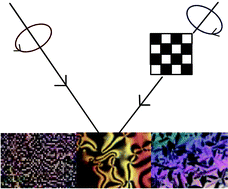A tutorial review is presented to inform and inspire the reader to develop and integrate strong scientific links between liquid crystals and holographic data storage, from a materials scientist's viewpoint. The principle of holographic data storage as a means of providing a solution to the information storage demands of the 21st century is detailed. Holography is a small subset of the much larger field of optical data storage and similarly, the diversity of materials used for optical data storage is enormous. The theory of polarisation holography which produces holograms of constant intensity, is discussed.
Polymeric liquid crystals play an important role in the development of materials for holographic storage and photoresponsive materials based on azobenzene are targeted for discussion due to their ease of photo-reversion between trans- and cis-states. Although the final polymer may not be liquid crystalline, irradiation can induce ordered domains. The mesogens act in a co-operative manner, enhancing refractive indices and birefringences. Surface relief gratings are discussed as a consequence of holographic storage.
Cholesteric polymers comprising azobenzene are briefly highlighted. Irradiation causing cis–trans-isomerisation can be used to control helix pitch. A brief mention of liquid crystals is also made since these materials may be of future interest since they are optically transparent and amenable to photo-induced anisotropy.

You have access to this article
 Please wait while we load your content...
Something went wrong. Try again?
Please wait while we load your content...
Something went wrong. Try again?


 Please wait while we load your content...
Please wait while we load your content...